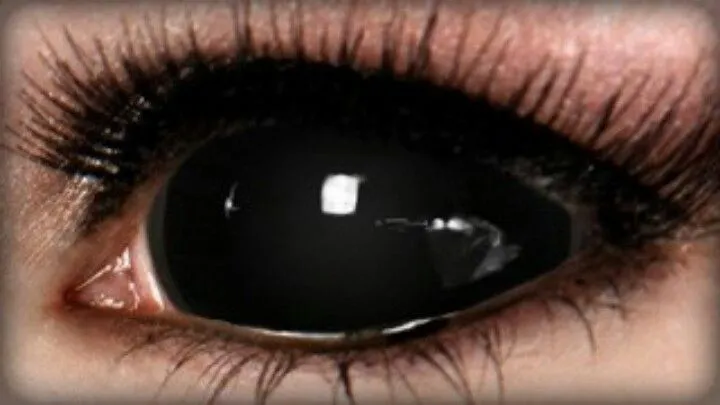Today's Thursday • 9 mins read
— By Dr. Sandip Roy.
“10 percent of any population is cruel, no matter what, and 10 percent is merciful, no matter what, and the remaining 80 percent can be moved in either direction.”
― Susan Sontag
A psychopath can move you in any direction if they get ample time. But can you spot a psychopath just by looking into their eyes?
Recently, psychopath eyes have sparked curiosity and controversy, leading many to ask: “Do psychopaths have different eyes?”
Researchers are now investigating psychopathy as a set of traits rather than a single condition, allowing them to explore psychopathic tendencies in non-offenders as well as offenders.
[Read this to decode psychopaths better: The Wisdom of Psychopaths Summary]
Let’s dive in to find out what’s so different about a psychopath’s eyes.
Do Psychopaths Have Different Eyes?
Psychopaths may actually have different eyes in terms of behaviors and responses.
- This study found that psychopathic offenders had no pupillary response to seeing disturbing images.
- This study found that psychopaths make significantly less eye contact, both in frequency and duration, during speaking, listening, and viewing images of human faces.
- Recently, Nicola Gray and Aimee McKinnon monitored 120 young men’s pupils while they listened to emotional sounds. They found that those with callous psychopathic traits had a reduced ability to process negative emotions, as shown by less change in pupil size.
- Researchers at Cardiff and Swansea University measured the pupillary responses of psychopathic and non-psychopathic offenders to disturbing and positive images. Non-psychopaths showed pupillary reactions to both. Psychopaths reacted to positive ones but not to disturbing ones, suggesting insensitivity to negative stimuli, not overall emotional immunity.
In popular culture, an imagery is often used that a psychopath’s eyes can “turn black,” but it’s actually a metaphorical expression, not a scientific observation.

If someone says, “His eyes turned black when I said I won’t ever invite him to my house party,” they mean to convey eyes that took on an evil look, conveying intense danger and deep malevolence.
A psychopath’s default eye behavior is a cold stare, especially when they confront negative or dangerous stimuli.
Overall, whatever their feelings inside, their expressions do not reach their eyes. They, or their brains, or their personality traits, do not allow it.
Psychopath Eyes vs. Normal Eyes
| Feature | Psychopathic Eyes | Normal Eyes |
|---|---|---|
| Expression | Often lack warmth or emotional depth (“cold” eyes) | Typically show a range of emotions |
| Gaze | May have a fixed or intense gaze | More likely to have a varied gaze |
| Pupil Reaction | Bodily responses may not be as strong as emotional stimuli are | Pupil dilation, wrinkling of the corner’s of eyes, and watering of eyes often occurs with emotions |
| Eye Contact | Can be overly intense or manipulative | Generally appropriate and varied |
| Blink Rate | May have a lower blink rate | Normal blink rate, varies with context |
| Micro-expressions | Often less expressive or subtle | More likely to show genuine micro-expressions |
| Focus | May appear predatory or calculating | More likely to show empathy and connection |

Why Do Psychopaths Have Different Eyes?
A psychopath’s different brain structure can play a role in their different eyes.
In psychopaths, the amygdala, the part of the brain that processes fear-related emotions, is up to 18% smaller.
This brain deficit can cause their eyes to express or react less to emotional situations than ours do.
Another reason for their “different” eye behavior could be their inability to process the emotional aspects of the world around them.
- Psychopathy is a personality disorder marked by callousness, impulsivity, lack of empathy and remorse, and blunted emotional experience.
- Studies indicate that psychopathic people have reduced responses to fear and emotive stimuli, making it difficult for them to recognize emotions in faces, show emotional responses, and experience anxiety.
- They also have abnormal brain responses to emotions and weak physical reactions to emotions.
“Psychopathy is a personality disorder characterized by enduring antisocial behavior, diminished empathy and remorse, and bold, disinhibited, and egotistical traits.” – Robert D. Hare
Hervey M. Cleckley, a pioneer in the field of psychopathy, observed that on the surface, a psychopath often appears as normal and well-adjusted when dealing with others or being examined, with little indication of their disorder within.
Incidentally, Cleckley was a psychiatrist for the prosecution in the 1979 trial of serial killer Ted Bundy.
A psychopath’s blunted emotions may also be the reason for their thrill-seeking behaviors.
How Do Psychopath Eyes Differ From Normal Eyes?
“The eyes of psychopaths have been described variously as cold, dull, emotionless, lifeless or empty, and as unseeing or staring… Some people say that it’s like looking into the eyes of a shark or reptile.”
— Dr. Robert Hare
Psychopath eyes can appear dead, flat, or reptilian-like eyes, with dark irises, and pupils that don’t dilate much to threats in the environment.
One of the most defining features of psychopathic eyes is their intense, unblinking stare, often known as serial killer eyes.
- A psychopath’s stare can be unnerving, as it gives the impression that they are highly attentive and focused, yet devoid of empathy.
- This stare typically comes with a lack of natural facial movements and expressions, making it difficult to gauge a psychopath’s true emotions or intentions.
Another frequent feature that the eyes of psychopaths have is ‘Sanpaku eyes‘, in which the white part of the eye is visible above or below the iris. It gives an unsettling appearance to their gaze, but is not exclusive to psychopaths.
Moreover, psychopaths frequently have dark irises. This makes psychopath eyes turn black due to their pupils not dilating properly. As a result, their eyes seem void of warmth, adding to the perception of “dead” or “reptilian-like” eyes.
A psychopath’s smile is often described as “crocodile-like,” not reaching their eyes. This reveals their lack of genuine emotional connection, which can leave others feeling uneasy or manipulated.
In contrast, a genuine (“Duchenne smile”) makes crow’s feet around the eyes.
Physical Traits of A Psychopath’s Eyes
Psychopaths do not necessarily have “giveaway” physical differences in their eyes, but may have abnormal behaviors in their facial expression, emotional processing, eye gaze, and pupil dilation.
Facial Expression and Emotional Processing
- Psychopaths may appear emotionally distant due to a lack of facial expression responsiveness.
- Their expressions may seem unemotional, cold, or calculated, even when discussing sensitive topics.
- They may struggle to form meaningful relationships and establish genuine connections with others.
- They may have difficulty understanding and interpreting the emotions expressed by others.
Eye Gaze and Pupil Dilation
- Psychopaths are known for their intense or predatory stare, which involves prolonged eye contact and can be intimidating to others.
- Psychopaths may maintain eye contact when others would avert their gaze as a social cue or a sign of respect, suggesting they are assessing or manipulating the situation.
- Psychopaths’ pupils may not dilate when they encounter distressing or fear-inducing stimuli, indicating emotional detachment and fearlessness.
- While these physical traits and eye behaviors are not unique to psychopaths, they can provide valuable information when observed alongside other behavioral and emotional patterns consistent with psychopathy.
- Recognizing these traits and understanding their implications can help identify and interact with individuals who may exhibit psychopathic traits.
Psychological Traits Behind Psychopath Eyes
A psychopath’s eyes, along with the way they present themselves and interact with others, might give us clues to their psychological traits.
Manipulation and Charm
- Psychopaths often use manipulative behavior and charm to gain trust and manipulate others for personal gain.
- Their charm can be a tool to deceive others and hide their true intentions.
- Psychopaths are difficult to spot because they can blend in and appear normal, making it challenging to identify their manipulative behavior.
- Some people may be drawn to psychopaths due to their captivating gaze and charisma, which can create a false sense of connection and trust.
Lack of Empathy and Remorse
Psychopaths cannot very well recognize fearful faces or voices.
- In 2002, James Blair found that psychopaths struggle to detect emotions in other people’s voices, particularly fear.
- In 1991, Robert D. Hare found that psychopaths have difficulty discerning emotional nuances in language.
This emotional processing deficit, causing a reduced ability to experience emotions and read others’ cues, can affect their eyes, resulting in descriptions such as “dead” or “flat.”
Another hallmark of psychopathy is a lack of empathy and remorse, which is evident in their eyes when confronted with their wrongdoings.
Scientific Studies on Psychopath-Eyes
- Neuroscientist James Fallon discovered that his “own” brain fit the pattern of a psychopath while researching psychopaths’ brain scans. It showed low activity in brain areas linked to empathy, morality, and self-control. He took genetic tests to confirm, and got more bad news: “I had all these high-risk alleles for hostile behavior, violence, and low empathy.”
- Science Daily reports that psychopaths have altered neural responses to emotion-related stimuli, which could explain their lack of empathy and antisocial tendencies.
- This study found that children with high callous-unemotional traits exhibit deficits in maintaining eye contact with their primary caregiver, even during expressions of love. This impairment was present in children as young as 4 years old and could be identified in a short 90-second interaction.
FAQs
1. Is there something like female psychopath eyes?
No. Psychopathy is diagnosed through behavior and personality traits, not eye appearance. There’s no proven “female psychopath eye” pattern.
2. What is the psychopathic stare?
It is an intense, prolonged, unblinking, and emotionless stare. It is often described as cold, predatory, or “shark-like.” It can feel unsettling, but it is not unique to psychopaths.
3. Can psychopaths make direct eye contact?
Yes, they can. Typically, their eye contact may feel intense or manipulative. Those of them with strong callous-unemotional traits may show reduced eye contact with close attachment figures, like parents.
4. Can psychopaths hold eye contact?
They can, though studies suggest they reduce eye contact during face-to-face conversations or when viewing human faces. Some may show stronger reactions, like pupil dilation, when exposed to unpleasant stimuli.
5. What are the “sanpaku” eyes of a psychopath?
“Sanpaku” means visible eye whites above or below the iris. It’s not unique to psychopaths and has no proven link to psychopathy.
[We know emotional intelligence is good for us. But, can high Emotional Intelligence lead to risky behaviors?]
Final Words
Psychopaths do not have a specific set of “eye traits” to mark them out, and there is no standardized “psychopath eyes test.”
While descriptions of their eyes may be intriguing, they are not enough to diagnose someone as a psychopath.
The idea that our eyes are windows to our soul isn’t true for psychopaths.
That said, recent research has led some experts to think that psychopathic eyes may be related to their underlying manipulative and callous traits.
√ Also Read: How To Spot And Survive Pure Evil: A Malignant Narcissist
√ Please spread the word if you found this helpful.
» You deserve happiness! Choosing therapy could be your best decision.
...
• Disclosure: Buying via our links earns us a small commission.